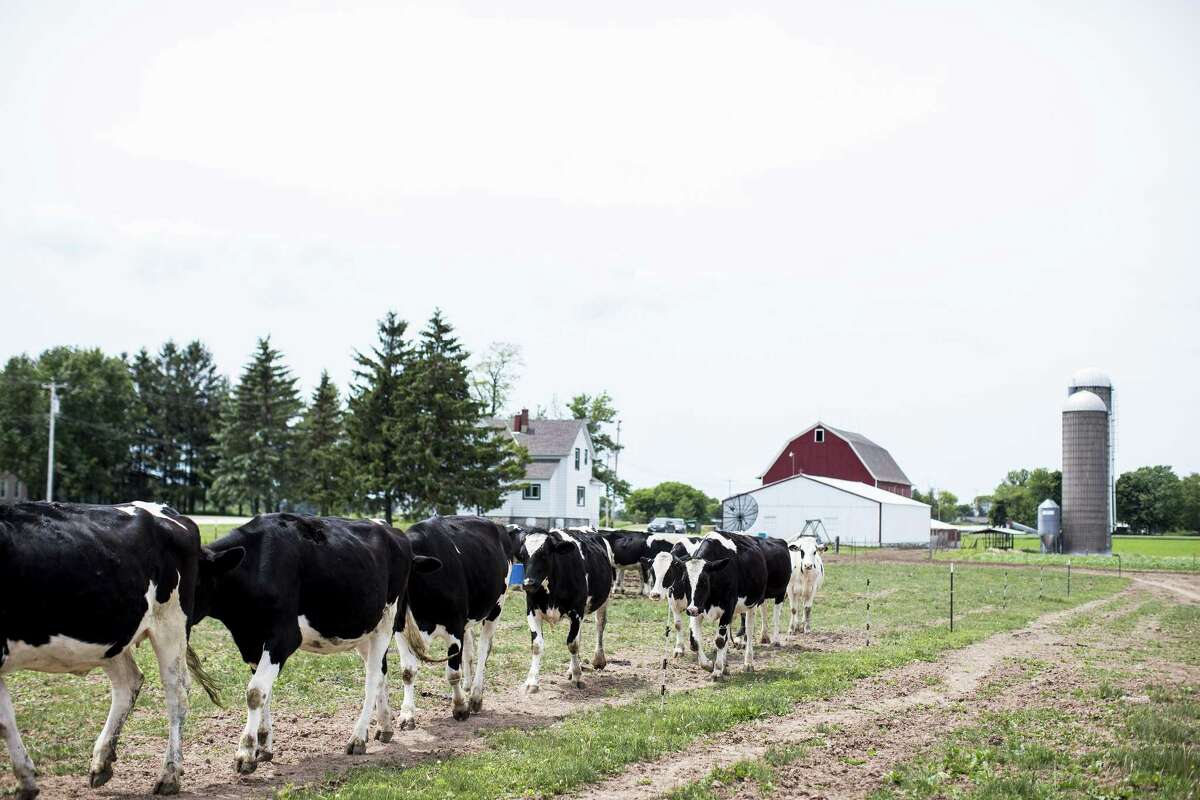 A trade war scenario of China thumbing its nose at U.S. dairy products could cost U.S. producers $3.4 billion a year and nearly 16,000 jobs over the next five years, according to a study released Monday by Texas A&M AgriLife Extension Service.
A trade war scenario of China thumbing its nose at U.S. dairy products could cost U.S. producers $3.4 billion a year and nearly 16,000 jobs over the next five years, according to a study released Monday by Texas A&M AgriLife Extension Service.
The good news: The recently announced U.S.-Mexico-Canada trade agreement likely has saved U.S. dairy’s top market, Mexico.
That’s key because Mexican imports of U.S. cheese alone are predicted to rise from $318 million in 2018 to more than $398 million by 2022 as Mexicans increasingly frequent U.S. restaurant chains and embrace U.S.-style foods. Canada is the second leading importer of U.S. dairy; China is the third.
Researchers completed the study at the request of the National Milk Producers Federation in September, before the USMCA was announced as a trilateral replacement to the 25-year-old North American Free Trade Agreement. Loss of both the Mexican and Chinese export markets could have cost the U.S. dairy industry up to $6.58 billion a year and more than 32,000 workers.
Texas is the nation’s sixth leading producer of dairy, after California, Wisconsin, New York, Idaho and Pennsylvania; exporting $247 million worth of milk products, some 80 percent of which goes to Mexico.
RELATED: After lengthy fight, oilfield landfill to be built near Texas town of Nordheim
Citing threats to national security, President Donald Trump in March announced worldwide tariffs on aluminum and steel and in May removed the exemption for trading partners including the European Union, Canada and Mexico. The tariffs prompted a slew of retaliatory duties on everything from apples to whiskey. Mexico enacted tariffs of 25 percent on imports of U.S. cheese; China put up tariffs on dairy products consisting mainly of whey, dry milk and cheese.
Luis Ribera, an agricultural economist with the university’s Center for North American Studies, said that while the situation with Mexico “was basically resolved,” producers still had reason to fear losing the Chinese market.
The Chinese middle class has been growing, and with it the nation’s appetites for dairy products including cheese and whey for use in baby formula. China in 2017 imported $577 million in dairy markets, making it the third leading market for U.S. dairy. Both the Mexican and Chinese dairy markets have fallen 42 percent since the Trump administration enacted the tariffs.
Ribera’s team weighed three scenarios.
The first was a natural economics-at-play situation where shoppers in the two nations adjust to higher prices by buying less. Ribera likened it to a consumer faced with a 50 percent price hike for avocados making less guacamole and avocado toast but not foregoing the fruit completely.
A second scenario mirrors what has already been seen, which is importers for political reasons either sourcing elsewhere or just stocking less of the commodity.
“In China, it makes a lot of sense because it’s centralized. So everything that’s imported, it’s the government that has the decision,” Ribera said. “That’s what we’re seeing basically with soybeans right now. Even though they need the soybeans, even though they cannot purchase more soybeans from Brazil, they’re still not trying to buy from the U.S.”
In a third, and most dire, scenario, almost all of the two countries’ U.S. dairy imports are replaced by imports from competing places such as the New Zealand and the EU, which is expected to reach a free trade agreement with Mexico by 2020.
“It was basically we lost the market,” he said.
Source: expressnews.com









